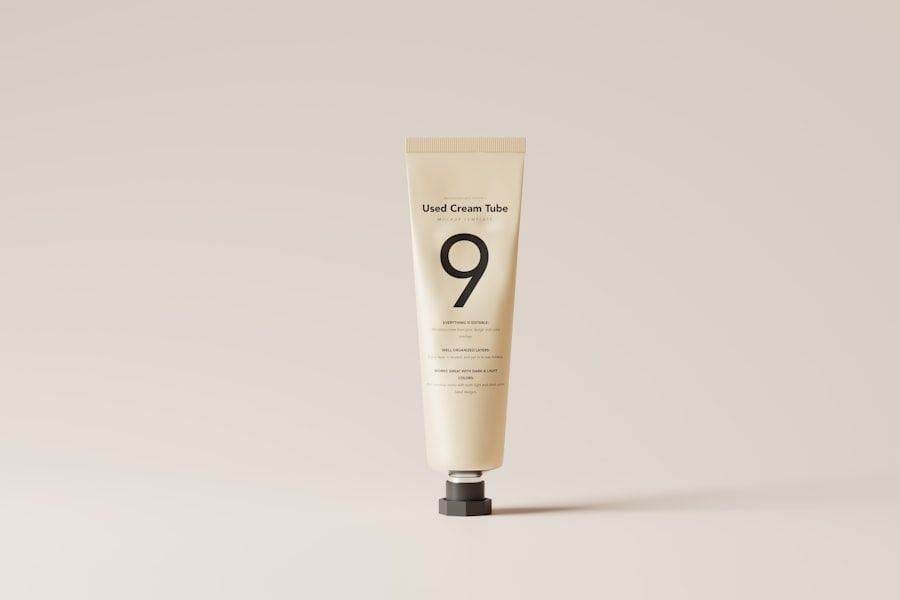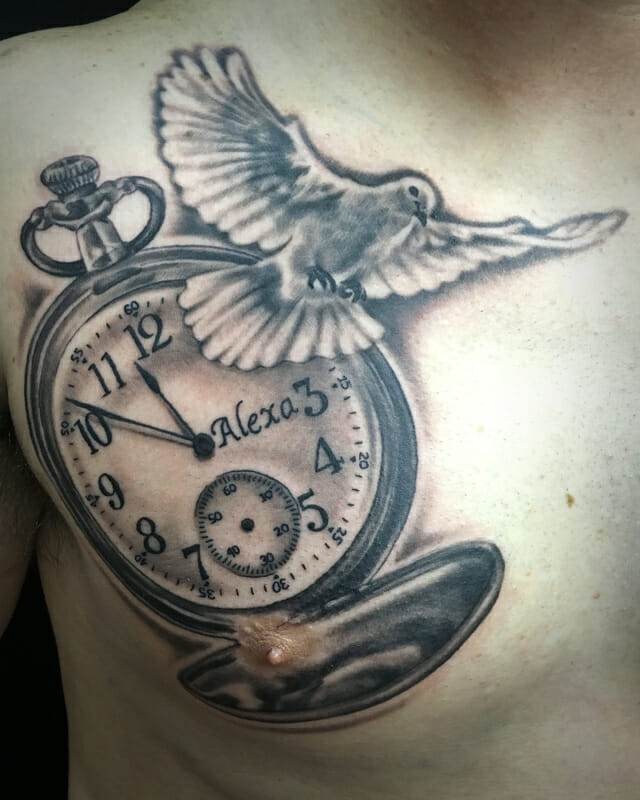Tattooing has a rich and storied history that spans thousands of years, with its roots deeply embedded in various cultures around the globe. From ancient tribal markings to contemporary body art, tattoos have served as symbols of identity, status, and personal expression. However, the journey of a tattoo does not end with the needle; it extends into the realm of aftercare, which is crucial for ensuring the longevity and vibrancy of the artwork.
Historically, tattoo aftercare practices were often based on cultural traditions and local remedies, varying significantly from one region to another. In many indigenous cultures, tattoo aftercare was an integral part of the tattooing process itself. Natural ingredients such as animal fats, plant oils, and herbal concoctions were commonly used to soothe the skin and promote healing.
These traditional methods were passed down through generations, reflecting a deep understanding of skin care and the importance of maintaining the integrity of the tattoo. As tattooing evolved and spread across different societies, so too did the approaches to aftercare, leading to a fascinating blend of ancient wisdom and modern practices that continue to shape the industry today.

Key Takeaways
- Traditional tattoo aftercare methods have been used for centuries, including natural ingredients like shea butter and coconut oil.
- Modern tattoo aftercare products have risen in popularity, offering a wide range of options such as lotions, balms, and foams specifically designed for tattoo healing.
- Innovations in tattoo aftercare technology have led to the development of products like tattoo aftercare patches and tattoo-specific skincare lines.
- Sustainable and eco-friendly tattoo aftercare options are becoming more prevalent, with products made from natural and organic ingredients, as well as packaging that is recyclable and biodegradable.
- Customized tattoo aftercare for different skin types is important, as individuals with sensitive skin may require different products and care routines than those with normal or oily skin.
Traditional Tattoo Aftercare Methods
Traditional tattoo aftercare methods often relied on natural ingredients that were readily available in local environments. For instance, many cultures utilized oils derived from plants, such as coconut or olive oil, to moisturize the skin and prevent scabbing. These oils not only provided hydration but also acted as barriers against environmental irritants.
Additionally, herbal remedies were frequently employed to reduce inflammation and promote healing. Ingredients like aloe vera and calendula were popular choices due to their soothing properties. In many cases, traditional aftercare practices also included specific rituals or guidelines that tattoo recipients were encouraged to follow.
For example, some cultures advised against exposing new tattoos to sunlight or water for extended periods, emphasizing the importance of keeping the area clean and protected. These practices were often rooted in a deep respect for the art of tattooing and an understanding of the skin’s healing process. While modern aftercare products have emerged, the principles behind these traditional methods remain relevant, reminding us of the enduring connection between culture and body art.
The Rise of Modern Tattoo Aftercare Products

As tattooing gained popularity in Western societies during the 20th century, the need for effective aftercare solutions became increasingly apparent. The rise of modern tattoo aftercare products marked a significant shift in how individuals cared for their new ink. Commercially available ointments, creams, and lotions began to flood the market, promising faster healing times and enhanced vibrancy for tattoos.
These products often contained a blend of ingredients designed to moisturize, protect, and soothe the skin. One of the most notable advancements in modern tattoo aftercare was the introduction of specialized formulations that catered specifically to the needs of freshly inked skin. Many brands began to focus on creating products that were free from harsh chemicals and fragrances, recognizing that sensitive skin required gentle care.
This shift not only improved the overall experience for tattoo recipients but also contributed to a growing awareness of skin health within the tattoo community. As consumers became more educated about their options, they began to seek out products that aligned with their values and preferences.
Innovations in Tattoo Aftercare Technology
The landscape of tattoo aftercare has continued to evolve with advancements in technology and research. Innovations in formulation science have led to the development of products that offer enhanced benefits for healing tattoos. For instance, some modern aftercare solutions now incorporate ingredients like hyaluronic acid and peptides, which are known for their hydrating and skin-repairing properties.
These ingredients work synergistically to promote faster healing while maintaining the vibrancy of the ink. Moreover, technology has enabled brands to create products that are not only effective but also user-friendly. Airless pump bottles and easy-to-apply sprays have become popular choices for consumers seeking convenience in their aftercare routines.
Additionally, some companies have embraced digital platforms to educate customers about proper aftercare techniques through videos and interactive guides. This integration of technology into tattoo aftercare reflects a broader trend toward personalized care and informed decision-making within the industry.
Sustainable and Eco-Friendly Tattoo Aftercare Options
As awareness of environmental issues continues to grow, so too does the demand for sustainable and eco-friendly tattoo aftercare options. Many consumers are now seeking products that align with their values regarding sustainability and ethical sourcing. This shift has prompted several brands to develop formulations that prioritize natural ingredients while minimizing their environmental impact.
Eco-friendly tattoo aftercare products often feature biodegradable packaging and cruelty-free testing practices. Brands are increasingly transparent about their ingredient sourcing, opting for organic or sustainably harvested components whenever possible. This commitment to sustainability not only appeals to environmentally conscious consumers but also reflects a broader movement within the beauty and personal care industries toward responsible consumption.
As more individuals embrace eco-friendly lifestyles, it is likely that sustainable tattoo aftercare options will continue to gain traction.
Customized Tattoo Aftercare for Different Skin Types



Addressing Specific Skin Concerns
For instance, individuals with sensitive skin may benefit from fragrance-free formulations that minimize irritation during the healing process. Conversely, those with drier skin may require more intensive moisturizers that provide long-lasting hydration. By catering to these diverse needs, brands are empowering consumers to take control of their aftercare routines and ensure optimal healing for their tattoos.
Enhancing the Tattoo Experience
This trend toward customization not only enhances the overall experience but also fosters a deeper connection between individuals and their body art.
A New Era of Tattoo Aftercare
By acknowledging the unique needs of each individual’s skin, the tattoo industry is entering a new era of personalized aftercare solutions. This shift is revolutionizing the way people care for their tattoos, leading to better healing outcomes and a more satisfying experience.
The Role of Technology in Tattoo Aftercare
Technology plays an increasingly vital role in shaping the future of tattoo aftercare products and practices. From innovative formulations to digital education platforms, advancements in technology are transforming how individuals approach their aftercare routines. For example, some companies are utilizing artificial intelligence to analyze skin types and recommend personalized aftercare solutions based on individual needs.
Moreover, wearable technology is beginning to make its mark in the tattoo industry as well. Devices that monitor skin hydration levels or detect signs of irritation could provide valuable insights for individuals during the healing process. This integration of technology not only enhances the effectiveness of aftercare but also empowers consumers with real-time information about their skin’s condition.
As technology continues to advance, it is likely that we will see even more innovative solutions emerge within the realm of tattoo aftercare.
The Future of Tattoo Aftercare Products
The future of tattoo aftercare products is poised for exciting developments as consumer preferences evolve alongside advancements in science and technology. With an increasing focus on sustainability, customization, and innovation, brands are likely to continue pushing boundaries in their quest to provide effective solutions for tattoo care. As awareness grows regarding the importance of proper aftercare in preserving both skin health and artistic integrity, consumers will demand more from their products.
In this dynamic landscape, it is essential for brands to remain attuned to consumer needs while embracing responsible practices that prioritize both efficacy and environmental stewardship. The fusion of traditional wisdom with modern science will undoubtedly play a crucial role in shaping the next generation of tattoo aftercare products. As we look ahead, it is clear that the journey of a tattoo extends far beyond its initial application; it encompasses a holistic approach to care that honors both artistry and individual well-being.
FAQs
What are tattoo aftercare products?
Tattoo aftercare products are specially formulated products designed to help the healing process of a new tattoo. These products can include ointments, lotions, balms, and soaps that are specifically created to promote healing and protect the tattooed skin.
Why are tattoo aftercare products important?
Tattoo aftercare products are important because they help to protect the new tattoo from infection, promote healing, and maintain the vibrancy of the tattoo. Proper aftercare can also help prevent scabbing, itching, and other complications during the healing process.
What are some common ingredients in tattoo aftercare products?
Common ingredients in tattoo aftercare products include moisturizing agents such as shea butter and coconut oil, as well as healing ingredients like aloe vera and vitamin E. Some products also contain antibacterial and antimicrobial agents to prevent infection.
What are some new developments in tattoo aftercare products in 2025?
In 2025, there have been advancements in tattoo aftercare products, including the use of CBD-infused products for their anti-inflammatory and pain-relieving properties. Additionally, there has been a focus on more sustainable and eco-friendly packaging for these products.
How should tattoo aftercare products be used?
Tattoo aftercare products should be used according to the instructions provided by the tattoo artist or the product manufacturer. Typically, after getting a new tattoo, the area should be gently washed and then a thin layer of the aftercare product should be applied multiple times a day for a specified period of time.
